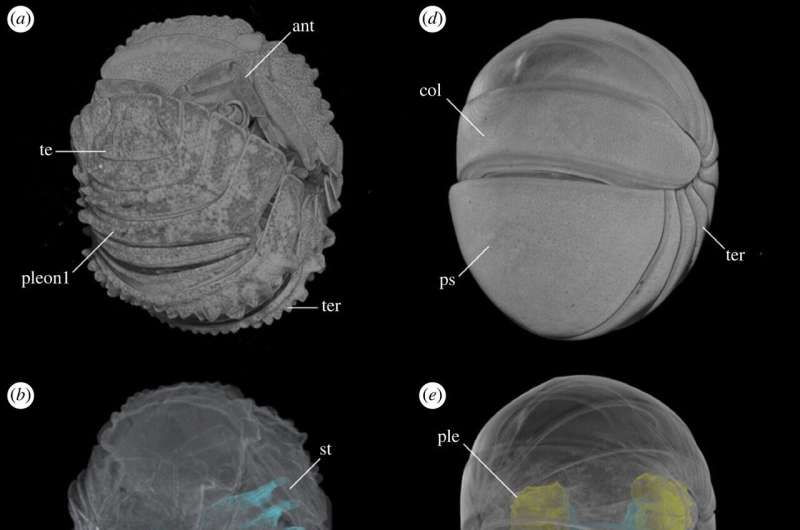December 20, 2023 report
Rare museum specimen reveals new insights into how trilobites curled themselves into a ball

A team of evolutionary biologists at Harvard University's Museum of Comparative Zoology and Department of Organismic and Evolutionary Biology, has learned more about how trilobites curled themselves into a ball based on a rare find in the museum's collection. In their paper in the journal Proceedings of the Royal Society B, the group describes how the unique specimen was found and how it was studied to learn more about its characteristics.
Prior research has shown that many creatures have independently evolved the ability to curl themselves into a ball as a means of protection from predators鈥攎ost such creatures, such as armadillos and pill bugs, have a protective shell as the outside of the ball. Prior research has also shown that trilobites (a long extinct type of tiny marine arthropod) also curled themselves into balls to avoid being eaten, but to date, very little evidence has been found regarding their internal organs due to their soft nature鈥攏on-biomineralized tissue was rarely preserved.
In this new effort, the research team found a way around this problem when one of the team members discovered an enrolled sample with preserved sternites鈥攑lates that line the stomach of trilobites鈥攊n the museum's collection.
Intrigued by the finding, the researchers took a closer look using a micro-CT scanner, which allowed them to study the interior of the ancient sea creature, which had been preserved in a mudslide hundreds of millions of years ago. The scanner also provided multiple image slices of the specimens giving them a previously unseen view of an enrolled trilobite with sternites still intact.
In studying the images, the research team was able to see in great detail how the tiny creature's stomach plates interacted with its appendages. And that showed them that a trilobite would have had to flex its entire body to allow for rolling, a move that would have allowed the plates to slide past one another, until locking in place.
The researchers compared what they had seen in the images with similar images of modern enrolling creatures such as pill bugs and armadillos and found they all used similar locking mechanisms to allow for a tight, safe rollup.
More information: Sarah R. Losso et al, Convergent evolution of ventral adaptations for enrolment in trilobites and extant euarthropods, Proceedings of the Royal Society B: Biological Sciences (2023).
Journal information: Proceedings of the Royal Society B
漏 2023 Science X Network





















